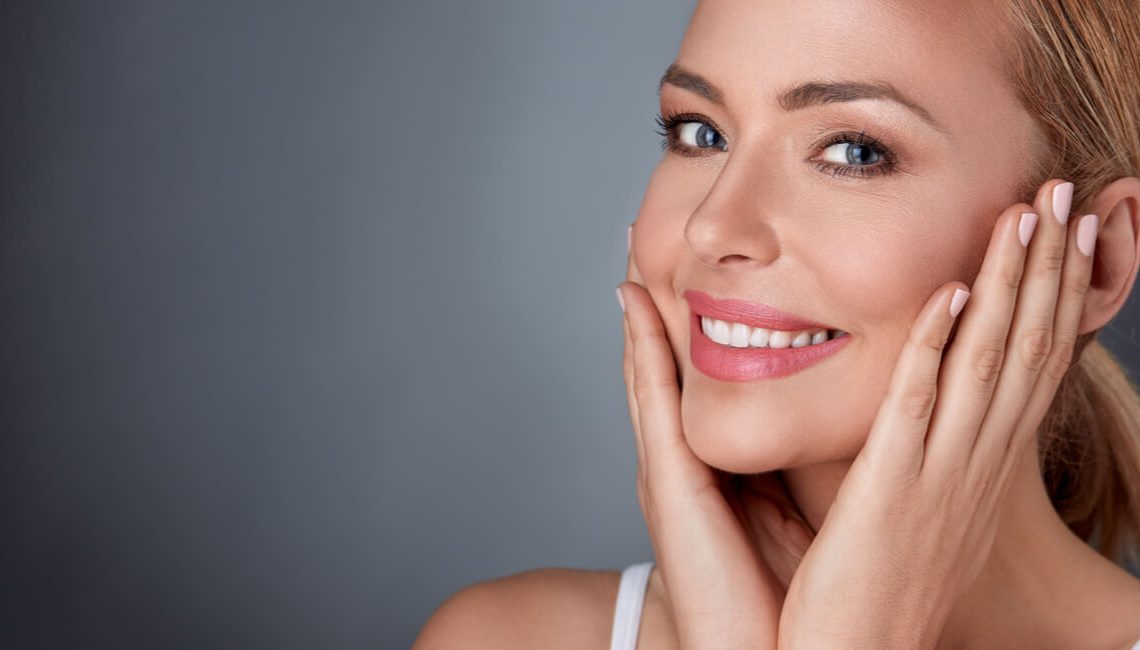
The hormone drop one experiences with menopause has visible effects on the skin, which ages and thins. However, this is not an inexorable process. Here’s what to do to slow it down.
Nowadays, menopause and post-menopause constitute an ever longer and more significant phase for women, making it paramount to be prepared with the actions and measures which can improve one’s quality of life. The way a woman goes through menopause can have important physical and psychological repercussions, and it is scientifically proven that what happens in the body also occurs on the skin. For example, did you know that there is a correlation between bone density and skin thickness? Well, there is, and the more osteoporotic the bones become, the thinner the skin gets.
Incredibly, the typically menopausal hot spells are connected with osteoporosis, too. In fact, the chemical mediators involved in bone reabsorption are also part of the body’s thermoregulation system. This means that the substances which are responsible for osteoporosis in post-menopausal women are also causative factors for the much-hated hot spells, and their unbalance is due to estrogen deficit. If left untreated, estrogen loss is responsible of a total loss of about 30% of the skin’s thickness in the first five years after menopause. Those who age badly for an aesthetic point of view are often less healthy than those who age gracefully. This is why it is important to prevent and treat the symptoms associated with menopause: they are far from being a natural, unavoidable process.
Phytoestrogens: ideal allies in this phase of our life.
First and foremost, both nutrition and cosmetics can provide the sexual hormones we need thanks to so-called phytoestrogens, that is plant-derived estrogens. Unlike the hormones our body produces, phytoestrogens only possess the positive qualities of estrogens, namely they improve the quality of bone tissue and skin, they reduce hot spells, and don’t increase the risk of breast or uterine cancer. Human hormones, and therefore hormone replacement therapy, do have these risks.
Here’s why not all menopausal women are destined to take hormone replacement therapy. There is indication for some, while for others it is completely contraindicated. Even if there were the need for hormone replacement, this should not last too long, and should only taken for a short period of a few years.
The ideal diet: poor in meat and rich in fiber.
It’s therefore important to know what phytoestrogens are, and in what foods they are contained. Firstly, the menopausal diet should be rich in vegetables and poor in meats, which are often contaminated with hormones, fraudulently used to strengthen the animal’s growth mechanisms. On the contrary, a fiber-rich diet based on whole grains, fruit, vegetables, and fish-derived fatty acids (staple Mediterranean diet foods) certainly does wonders for the skin.
Dried fruit and oily fish are rich in omega 3 and 6, which are fundamental for the integrity of the cutaneous barrier and the skin’s elasticity. Green tea and berries contain antioxidant substances which can help superficial microcirculation and contrast the cutaneous aging process.
Soya is precious, but not all women tolerate it.
When it comes to phytoestrogens, soya isoflavones, and genistein in particular are the most well-studied. However, the habit of eating soya is only a very recent one in western populations. It is very common in oriental diets, and is not a staple food of ours, which explains why not all western women can tolerate it.
It is therefore useful to remember that many vegetables which are typical in our Mediterranean diet can be natural phytoestrogen sources: beans and other legumes, tomatoes, cabbage, carrots and even some grains and aromatic herbs such as parsley, age and peppermint. Phytoestrogen-rich foods, combined with the cooking methods of the Mediterranean diet, significantly contribute to keeping the skin young and healthy.
Article of Dr Adele Sparavigna for https://4me.styl


